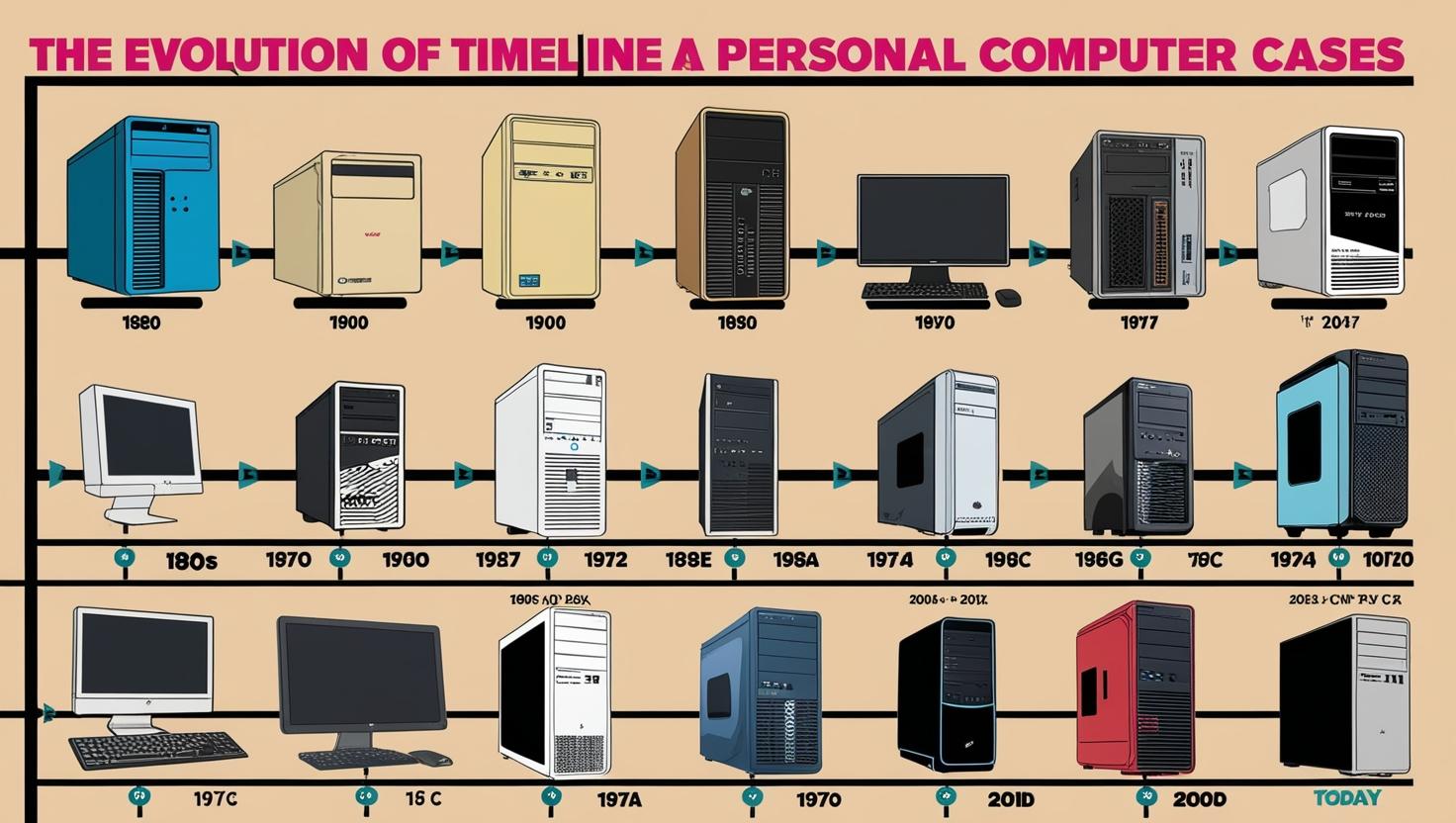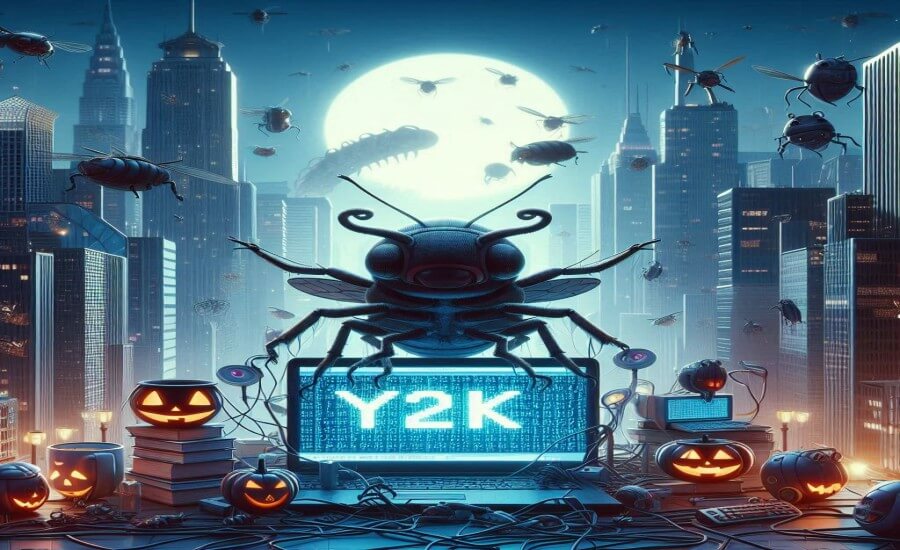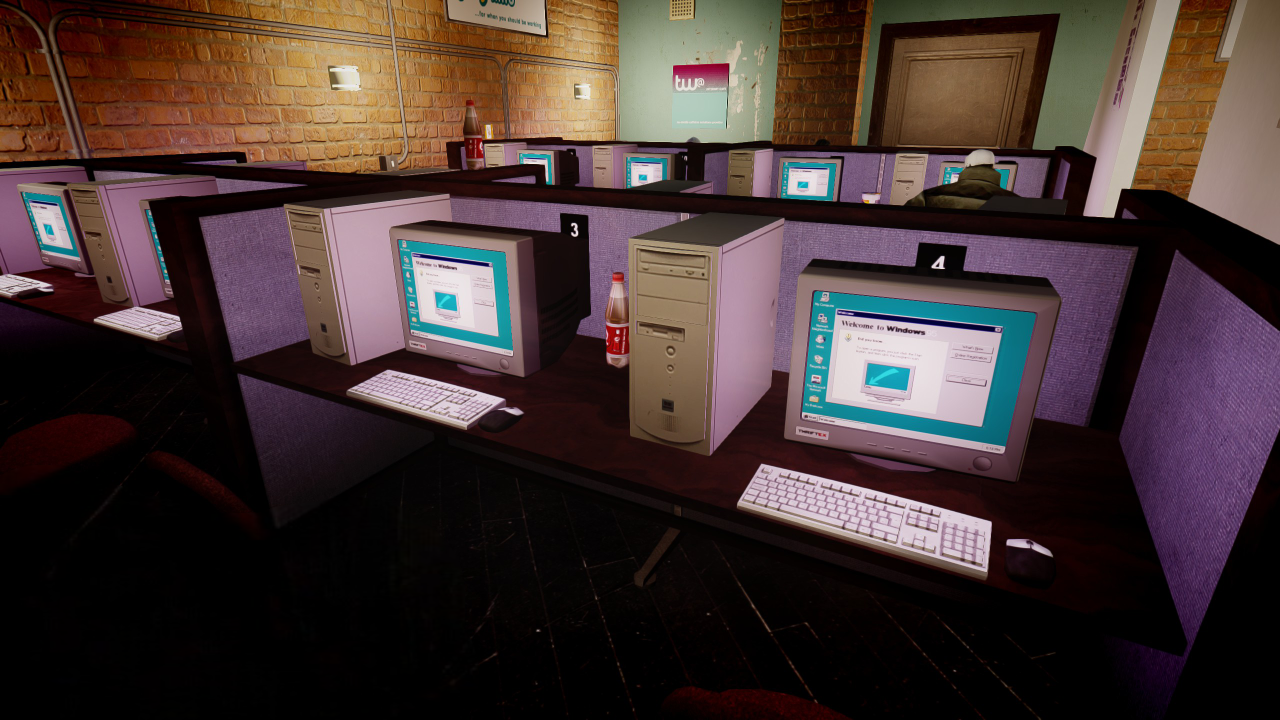Let's rewind to the late 1990s or early 2000s. You're either carefully assembling your first PC or visiting that trusted local computer shop in Vadodara to get one built. The heart of the machine – motherboard, processor, RAM, hard drive – is ready, but where does it all live? In the "cabinet," of course. And that cabinet is almost invariably a rectangular metal box, clad in slightly textured plastic, in a shade somewhere between off-white and light tan: the ubiquitous beige box pc history.
You might hear the satisfying thunk as the heavy steel side panel slides into place, maybe catch your finger on a slightly sharp internal edge while wrestling with tangled grey ribbon cables.
It’s functional, it’s sturdy (mostly), it provides access for upgrades, but aesthetically? It's an appliance, utterly devoid of personality. Fast forward to today, and desktop PCs often sit proudly on desks, showcasing meticulously managed cables and synchronized rainbow lighting through crystal-clear tempered glass panels. How did we get from that utilitarian beige box to the dazzling RGB rigs of the present? It's been a wild evolution.
The Functional Foundation (1970s - Mid 1980s): "Early Enclosures & The Appliance Look"
In the pioneering days of personal computing, the "case" was often an afterthought or non-existent. Hobbyist kit computers like the Altair 8800 were frequently housed in simple metal boxes, if enclosed at all. Early all-in-one machines like the Commodore PET or TRS-80 had unique, integrated designs where the case was the computer.
The Apple II (1977) made a significant step by presenting the computer in a friendly, sculpted plastic case, making it feel more like an approachable appliance suitable for homes and schools.
However, it was the arrival of the IBM Personal Computer (Model 5150) in 1981 that truly set the standard for the look of "serious" computing for years to come. Its robust, horizontal desktop case, made of sturdy steel with a plastic front bezel – typically in a shade of beige or putty – prioritized accessibility for expansion cards and durability over aesthetics.
This functional, no-nonsense design became the template for the countless IBM PC compatibles (clones) that followed, establishing the beige box as the visual shorthand for a personal computer. The focus was purely on housing the components safely and allowing basic airflow.
Tech Spotlight: The IBM PC Case Design
- Form Factor: Horizontal desktop (initially), later vertical towers.
- Materials: Primarily steel chassis with plastic front bezels.
- Color: Overwhelmingly beige or off-white ("putty").
- Focus: Functionality, component access (removable cover), durability, standardization for mass production. Aesthetics were minimal.
- Significance: Established the dominant visual and functional template for PC cases for over a decade, influencing the entire PC clone industry.
Milestone Markers
- 1970s: Early kit/hobbyist computers in basic enclosures. Integrated designs like PET/TRS-80. Apple II introduces a friendlier aesthetic.
- 1981: IBM PC Model 5150 launches, establishing the beige metal box standard.
Parallel Developments
- Late 70s/Early 80s: Microprocessors become more powerful. Floppy drives become standard storage. Expansion cards (graphics, sound, modems) add functionality. The PC clone market begins.
User Experience Snapshot
Imagine hefting that solid IBM PC or early clone case. Removing the heavy steel cover (often secured by multiple screws) to install a new expansion card. The internals were functional but messy, with limited thought given to cable routing or airflow beyond a single exhaust fan (if that). It felt like working on industrial equipment, not a personal device.
Price Point Perspective
The case was simply part of the overall computer system cost. Its design was driven by manufacturing efficiency and component housing, not premium aesthetics.
The Reign of Beige (Mid 1980s - Late 1990s): "The Ubiquitous Box"
This was the era when personal computers truly went mainstream, landing on desks in offices, schools, and increasingly, homes around the world, including India. And almost universally, they lived inside beige boxes. Driven by the massive IBM PC compatible market, case design prioritized standardization and cost-effectiveness above all else.
The look was uniform: rectangular towers (mini, mid, or full) or desktop cases, constructed from steel frames and beige plastic panels. Minor variations in button placement or ventilation grille patterns existed, but the overall aesthetic was utilitarian and bland. Inside, the layout was standardized first by the AT form factor, and then significantly improved by Intel's ATX specification (introduced around 1995).
ATX rearranged component placement for better airflow, easier access, and integrated I/O ports, becoming the standard we still largely follow today. While functional and allowing easy upgrades (a hallmark of the PC ecosystem), these cases offered zero personality. They were the anonymous "computer cabinets" sold in shops across India, housing assembled PCs or serving DIY builders.
Tech Spotlight: AT & ATX Form Factors
- AT (Advanced Technology): Older standard, common in 286/386/early 486 era. Less optimized layout, often used fiddly keyboard connectors.
- ATX (Advanced Technology eXtended): Introduced by Intel (~1995). Redefined motherboard layout, power supply standards, and case design for better cooling, easier assembly, and integrated rear I/O panels. Became the dominant standard for desktop PCs and remains so today (with variations like Micro-ATX, Mini-ITX).
- Case Types: Desktop (horizontal), Mini-Tower, Mid-Tower, Full-Tower (vertical).
- Focus: Standardization, mass production, cost-effectiveness, ease of component access and upgrades within the AT/ATX specifications.
- Significance: Standardized PC case and component layouts, enabling a massive ecosystem of compatible parts and facilitating the DIY PC building market. ATX improvements were crucial for handling increasingly hot components.
Milestone Markers
- Mid 1980s - Late 1990s: Beige AT and later ATX cases dominate the PC market globally.
- ~1995: Intel introduces the ATX specification, leading to improved case layouts and features.
Parallel Developments
- Late 80s/90s: IBM PC compatible platform becomes dominant. Windows 3.x and later Windows 95/98 become the standard operating systems. Processors (386, 486, Pentium) become significantly more powerful and generate more heat. CD-ROM drives become standard.
User Experience Snapshot
Remember the sea of beige towers in every office or computer lab? The slightly rough texture of the plastic front? The relative ease (compared to earlier machines) of sliding off the side panel (often just two screws by the late 90s) to add more RAM or a new hard drive? The tangle of IDE ribbon cables inside? These cases were unremarkable, functional workhorses. They just were computers.
Price Point Perspective
Basic beige ATX cases became commodity items, often very inexpensive ($30-$50 USD range or ₹1500-₹2500 INR equivalent), especially from local assemblers or generic brands common in the Indian market. The focus was on volume and low cost.
The Modding Awakening (Late 1990s - Early 2000s): "Color & Cold Cathodes"

Towards the end of the beige reign, dissatisfaction began to brew. Gamers, enthusiasts, and DIY builders grew tired of the bland uniformity.
They wanted PCs that not only performed well but also looked unique and reflected their personality. This desire, coupled with the practical need for better cooling for increasingly powerful gaming components, sparked the case modding scene.
Pioneers armed with Dremel tools started cutting windows into their steel side panels to show off internal components. They added lighting, initially using neon tubes or cold cathode fluorescent lamps (CCFLs), often in bright blue or green. Custom paint jobs transformed beige boxes into colorful creations. Extra fans were drilled into panels to improve airflow.
This grassroots movement demonstrated a clear demand for aesthetics and personalization beyond pure function.
Manufacturers eventually took notice. The first deviation from beige was the arrival of black cases, offering a sleeker, more "serious" look. Then came cases with factory-installed side panel windows, saving modders the effort and risk of cutting their own.
Brands known for cooling, like Cooler Master and Antec, began offering cases with better airflow and slightly more aggressive styling, catering to the growing gamer and enthusiast market. Even boutique PC builders like Alienware (before being acquired by Dell) made waves with their distinctive, non-beige case designs. The beige monolith was starting to crack.
Tech Spotlight: Early Case Modding & Commercial Responses
- Modding Techniques: Cutting side panel windows (acrylic), adding internal lighting (CCFLs, early LEDs), custom paint jobs, adding extra fans, sleeving cables.
- Driving Force: Desire for personalization, showcasing internal hardware, improving cooling for gaming components.
- Manufacturer Response: Introduction of black cases, cases with pre-installed side windows, improved airflow designs (mesh grilles, more fan mounts), more stylish front panel designs.
- Key Brands (Emerging/Adapting): Cooler Master, Antec, Thermaltake, Lian Li (known for aluminum), Alienware (boutique).
- Significance: Marked the shift away from purely utilitarian case design towards aesthetics and performance features, driven by enthusiast demand. Laid the groundwork for the modern diverse case market.
Milestone Markers
- Late 1990s: Case modding scene emerges and grows via online forums and communities.
- ~Early 2000s: First mass-market black cases and cases with factory windows become widely available. Manufacturers start designing cases specifically for gamers/enthusiasts.
Parallel Developments
- Late 90s/Early 00s: PC gaming explodes (3D acceleration, online multiplayer). CPU and GPU heat output increases significantly. The DIY PC building community grows rapidly online. Internet cafes often showcased modified or better-looking PCs.
User Experience Snapshot
Remember the pride of showing off your first case mod? Carefully cutting that window, installing a blue cold cathode, and seeing your components bathed in light? Or maybe just buying your first sleek black case felt like a huge upgrade from beige? This era was about taking ownership of the PC's appearance, making it more than just a functional box.
Price Point Perspective
Modding often involved DIY effort and the cost of materials (acrylic, lights, paint). Early commercial non-beige or windowed cases commanded a price premium over basic beige boxes, establishing the market for enthusiast-grade cases.
The Airflow & Aesthetics Era (Mid 2000s - Mid 2010s): "Cooling, Cables & Style Take Center Stage"

The seeds sown by the modding scene blossomed into a full-fledged focus on performance and aesthetics in case design. Driven by the demands of high-powered gaming PCs and the growing DIY enthusiast market, manufacturers competed fiercely on features beyond just housing components.
Airflow became paramount. Cases featured mesh front panels, multiple fan mounts (front, top, rear, side), larger fan sizes (120mm becoming standard, even 140mm+), and designs optimized for moving air efficiently across heat-generating components like CPUs and GPUs.
Cable management transformed from a messy afterthought into a key feature. Cases started including cutouts in the motherboard tray, space behind the tray for routing cables, and Velcro straps or tie-down points, allowing for much cleaner internal builds that not only looked better (especially with windowed panels) but also improved airflow.
Ease of use improved with tool-less drive bays (using plastic sleds or levers instead of screws) and thumbscrews for side panels becoming common. Support for liquid cooling radiators became an expected feature in enthusiast cases.
Aesthetics diversified greatly. Aggressively styled "gamer" cases with sharp angles and bold accents coexisted with sleek, minimalist designs featuring brushed aluminum or clean lines. Materials improved, with higher quality plastics, aluminum construction (popularized by Lian Li), and the first hints of tempered glass side panels appearing towards the end of this period.
Specialized case manufacturers like Corsair, NZXT, Fractal Design, and Lian Li rose to prominence alongside established players like Cooler Master and Antec. The mid-tower ATX case became the dominant form factor for most builders.
Tech Spotlight: Performance & Build Quality Features
- Enhanced Airflow: Mesh front/top panels, multiple fan mounts (120mm/140mm+), optimized internal layouts.
- Cable Management: Motherboard tray cutouts, space behind tray, cable ties/Velcro straps.
- Tool-less Design: Snap-in or lever-based mechanisms for installing drives and sometimes expansion cards.
- Water Cooling Support: Designated mounting points for radiators and reservoirs.
- Materials & Finish: Higher quality plastics, brushed aluminum, early tempered glass panels. Diverse aesthetic styles (gamer vs. minimalist).
- Significance: Case design matured significantly, focusing on thermal performance, ease of building, cable management, and diverse aesthetics to cater to the booming enthusiast and gaming markets.
Milestone Markers
- Mid-2000s: High-airflow cases (e.g., Antec 900, Cooler Master HAF series) become popular. Cable management features become standard in enthusiast cases.
- Late 2000s/Early 2010s: Tool-less designs widespread. Water cooling support common. Minimalist case designs (e.g., Fractal Design Define series) gain popularity. Early adoption of tempered glass side panels.
Parallel Developments
- Mid-2000s onwards: Dual-core and quad-core CPUs become common. GPUs become significantly more powerful and hotter (Nvidia 8800GTX era, AMD Radeon HD series). DIY PC building becomes a major hobby facilitated by online guides and communities. Esports grows.
User Experience Snapshot
Building a PC became significantly easier and more satisfying. No more wrestling with tiny screws in awkward places thanks to tool-less bays. Routing cables neatly behind the motherboard tray resulted in a clean build you could be proud to show off through the increasingly common side window.
Better airflow meant quieter, cooler systems, even when pushing high-end gaming components. The choice of case styles allowed for more personal expression.
Price Point Perspective
This era saw clear market segmentation. Budget cases offered basic features, while mid-range ($80-$150 USD / ₹5k-₹10k INR) and high-end ($150+ USD / ₹10k+ INR) enthusiast cases offered premium materials, better features, and more refined aesthetics. Brands popular in India like Cooler Master offered options across these price points.
The RGB & Glass Showcase (Mid 2010s - Present): "Lighting Up the Desktop"
If the previous era focused on airflow and buildability, the current era, starting around the mid-2010s, shifted heavily towards visual presentation, dominated by two key trends: RGB lighting and tempered glass.
What started with single-color LED fans exploded into addressable RGB (ARGB) lighting integrated into virtually every component: fans, case strips, RAM modules, motherboards, GPUs, CPU coolers, power supplies, even cables. Controllable via software (often complex ecosystems from different vendors), users could create intricate, synchronized lighting effects, turning their PCs into dynamic light shows.
To showcase these illuminated internals, tempered glass side panels replaced acrylic windows and solid steel panels, becoming almost standard on enthusiast cases. This transparent, premium-feeling material turned the PC itself into a display piece. Consequently, meticulous cable management shifted from a practical consideration to an absolute necessity – every visible wire could detract from the clean aesthetic.
While RGB and glass dominate, diverse trends coexist. Minimalist designs with clean lines and hidden airflow (like updated Fractal Design Define cases or NZXT H series) remain popular for those who prefer subtlety.
The quest for performance continues with a renewed focus on high-airflow designs, often featuring full mesh front panels. Small Form Factor (SFF) cases (Mini-ITX) have also seen a surge in popularity among enthusiasts seeking powerful yet compact builds. Sustainability and the use of more eco-friendly materials are also emerging considerations.
The Indian market fully embraces these global trends, with RGB gaming rigs being highly popular among enthusiasts and in gaming cafes.
Tech Spotlight: Tempered Glass & Integrated RGB
- Tempered Glass (TG): Durable, clear glass panels (primarily side, sometimes front) replacing acrylic or steel, allowing full view of internal components.
- RGB/ARGB Lighting: Addressable Red-Green-Blue LEDs integrated into fans, case elements, and components, controllable via software for customizable colors and effects.
- Aesthetic Focus: Design heavily emphasizes showcasing components and lighting. Cable management becomes critical for visual appeal.
- Diverse Trends: Coexistence of RGB-heavy builds, minimalist designs, high-airflow mesh cases, and popular Small Form Factor (SFF) builds.
- Significance: Transformed the PC case from an enclosure into a display showcase. Made personalized lighting a core feature. Drove innovation in cable management and component aesthetics. Diversified form factors (SFF).
Milestone Markers
- ~2015-2017: Tempered glass side panels and integrated RGB lighting become mainstream trends in enthusiast PC cases.
- Late 2010s: Software control ecosystems for RGB lighting mature (e.g., Corsair iCUE, Asus Aura Sync). SFF cases gain significant popularity.
- 2020s: Renewed focus on high-airflow mesh designs alongside glass/RGB trends. Sustainability becomes a minor but growing factor in case design.
Parallel Developments
- Mid-2010s onwards: PC component manufacturers increasingly incorporate RGB lighting into their products (RAM, motherboards, GPUs, coolers). Custom cable sleeving becomes popular. Rise of PC building influencers on YouTube/Twitch showcasing aesthetic builds.
User Experience Snapshot
Building a PC today often involves planning not just components, but lighting zones and cable routes. Peeling the protective film off a brand new tempered glass panel. Spending hours meticulously routing cables for a perfectly clean look.
Synchronizing RGB lights across multiple components via software. Choosing between a flashy RGB showcase, a sleek minimalist box, or a tiny SFF powerhouse. The case is now a critical aesthetic choice, deeply integrated with the overall build.
Price Point Perspective
Tempered glass and integrated RGB features initially commanded a premium but have now trickled down to more affordable price points. However, high-end enthusiast cases with premium materials, extensive RGB, and complex designs can easily cost $200-$500 USD or more (₹15k - ₹40k+ INR). The SFF market also often carries a premium due to specialized components.
Full Circle Reflections
The computer case has journeyed far beyond its humble origins as a purely functional, beige metal box designed simply to hold components. Driven by the demands of gamers needing better cooling, the creativity of modders craving personalization, and the desire of enthusiasts to showcase their powerful hardware, the case evolved.
From the basic ATX standard came innovations in airflow, tool-less design, and cable management, making building PCs easier and more efficient.
Then came the aesthetic revolution – first black paint and windows, then the explosion of tempered glass and customizable RGB lighting, transforming the PC from a hidden utility into a potential centerpiece. Today's market offers incredible diversity, from silent minimalist boxes to dazzling light shows, from massive cooling-focused towers to incredibly compact SFF marvels.
While the beige box served its purpose in democratizing the PC, its colorful, customizable descendants reflect how personal computers have become truly personal – extensions of our style and passion, no longer content to be just functional ghosts in the machine.
The Heritage Impact: More Than Just a Box
The evolution of PC cases has influenced:
- PC Aesthetics: Transformed the look of desktop computing from utilitarian beige to diverse styles including high-tech, minimalist, and expressive RGB.
- Thermal Management: Drove innovation in airflow design, fan technology, and support for liquid cooling.
- DIY/Enthusiast Culture: Made PC building more accessible (tool-less features, cable management) and visually rewarding, fostering a massive global community.
- Component Design: Encouraged manufacturers of motherboards, RAM, GPUs, and coolers to focus on aesthetics and RGB integration.
- Market Specialization: Created a large and diverse market for specialized case manufacturers catering to different needs (gaming, silence, SFF, etc.).
The case is no longer just the container; it's an integral part of the PC's performance, usability, and personality.
FAQ: Case Closed - Common Questions
- Why were old computer cases always beige?
Beige (or "putty") was a common, inexpensive color for plastics and paints used in mass production. It was considered a neutral, professional, and non-distracting color suitable for office environments, where most early PCs were used. There were also formulations designed to resist yellowing from UV light better than basic white plastic. - What does ATX mean for computer cases?
ATX (Advanced Technology eXtended) is a standard for motherboard and power supply form factors introduced by Intel around 1995. It dictates the size, mounting points, power connector types, and I/O panel placement. ATX cases are designed to fit ATX (and often smaller Micro-ATX or Mini-ITX) motherboards, ensuring compatibility between components. It significantly improved upon the older AT standard for layout and cooling. - What started the trend of PC case modding?
It emerged in the late 1990s, primarily driven by PC gamers and enthusiasts who were dissatisfied with boring beige boxes. They wanted to personalize their PCs, show off the increasingly powerful hardware inside, and improve cooling performance for overclocking or demanding games. Cutting windows, adding lights, and custom paint jobs were common early mods. - Why are RGB lighting and tempered glass panels so popular now?
These trends cater to the desire to showcase the powerful and often aesthetically designed components inside modern PCs (like GPUs with custom coolers, RGB RAM, elaborate CPU coolers). Tempered glass offers a clear, premium view, while RGB lighting allows for extensive personalization and visual flair, turning the PC into a display piece. - Do they still make simple beige computer cases?
While extremely rare in the consumer market (which favors black or white as base colors even for budget cases), simple, functional beige or off-white cases might still be found in some pre-built systems for large corporate/government orders or in specialized industrial/server applications where aesthetics are completely irrelevant. For typical home/enthusiast users, beige is effectively extinct.





